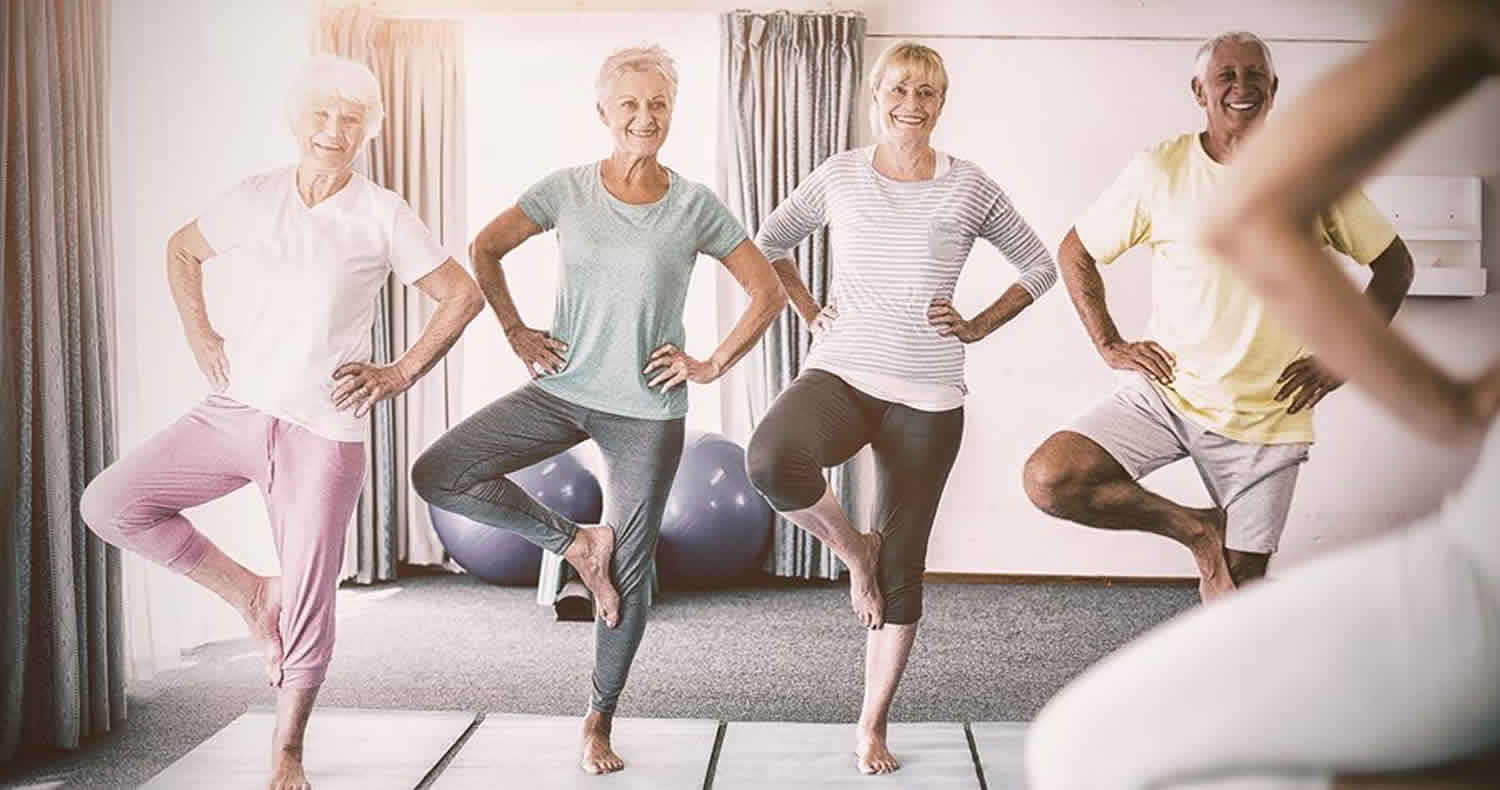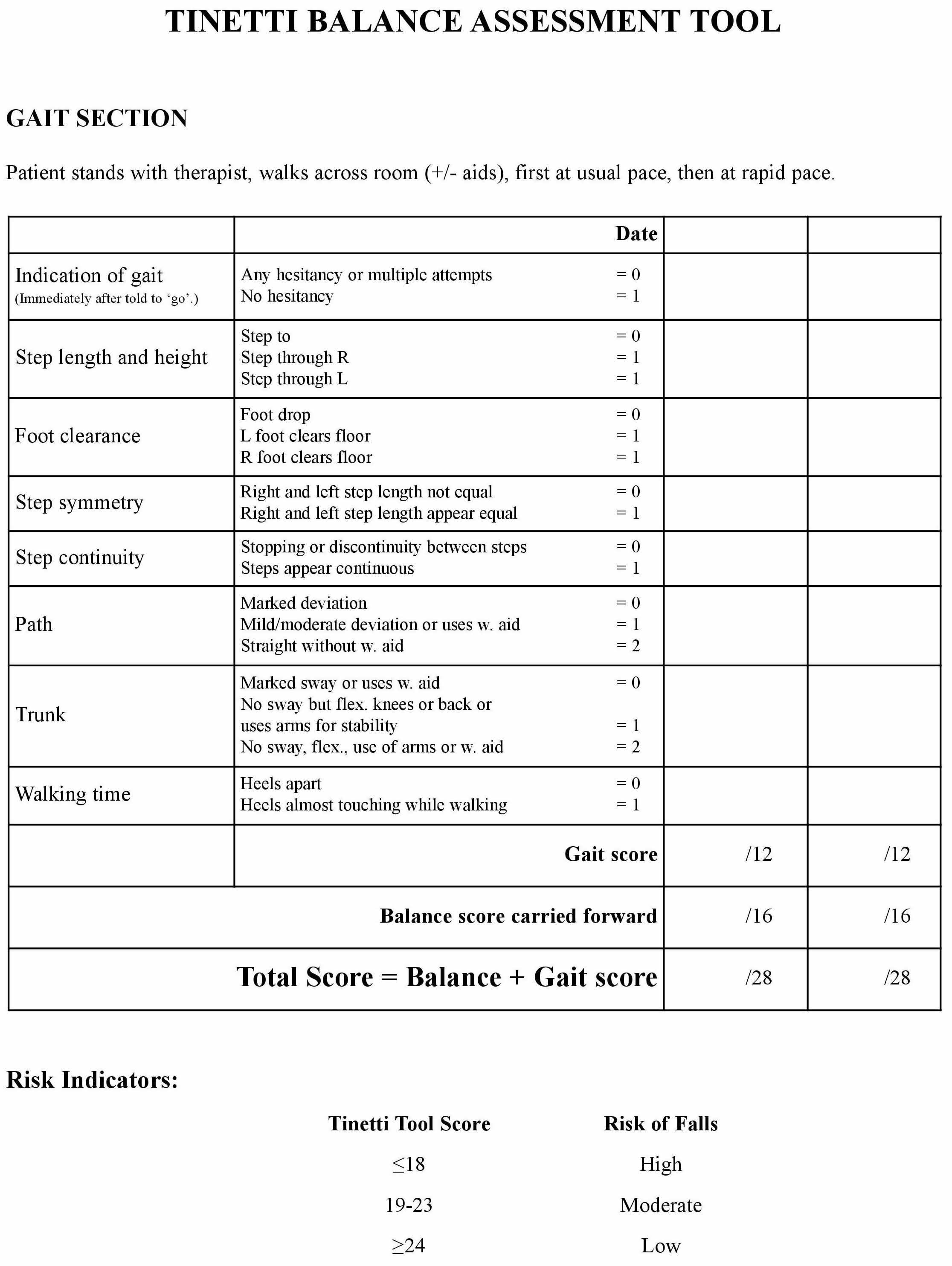Tinetti test
Tinetti assessment tool is an easily administered task-performance test that measures an older adult’s gait and balance abilities 1. Tinetti test is scored on the older adult’s ability to perform specific tasks. The Tinetti-test 1 was published by Mary Tinetti (Yale University) to assess the gait and balance in older adults 2 and to assess perception of balance and stability during activities of daily living and fear of falling. The Tinetti gait and balance test is also called Tinetti Performance-Oriented Mobility Assessment (POMA) 3. Tinetti test also is a very good indicator of the fall risk of an individual. It has better test-retest, discriminative and predictive validities concerning fall risk than other tests including Timed Up and Go Test (TUG), one-leg stand and functional reach test 4.
The Tinetti Balance and Gait Test 1 is the oldest clinical balance assessment tool and the widest used among older people 5. The advantages of Tinetti’s balance assessment tool are its inclusion of both balance and gait and its good inter-rater reliability (85% agreement between raters) and excellent sensitivity (93% of fallers are identified) 6. However, many items are difficult to assess on a 3-point scale and it has poor specificity (only 11% of non-fallers were identified). Despite being widely used in gerontology, the gait section is seldom used and it has ceiling effects for younger people with balance deficits 5.
The Tinetti gait and balance test requires a hard armless chair, a stopwatch and also, a 15 feet even and uniform walkway. It has 2 sections: one assesses balance abilities in a chair and also in standing; the other assesses dynamic balance during gait on a 15 feet even walkway.
The patient is to sit in an armless chair and will be asked to rise up and stay standing. The patient will then turn 360° and then sit back down 7. This is to test the patients’ balance. Testing this, the evaluator will look at several key points including how does the patient rise from and sits down on his/her chair, whether or not the patient stays upright while sitting and standing, what happens when the patients’ eyes are closed or when the patient gets a small push against the sternum 3.
Next, the patient will have to walk a few meters at a normal speed, followed by turning and walking back at a “fast but safe” speed. The patient will then sit back down. As well as in the first part of the test, there are some points the evaluator has to look at. These are the length and height of the steps, the symmetry and continuity of the steps and straightness of the trunk.
During this test, the patient can use any assistive devices (walking stick, crutches, zimmer frame) they would normally use 3.
Equipment needed:
- Hard armless chair
- Stopwatch or wristwatch
- 15 ft walkway
Time to complete:
- 10-15 minutes
Scoring: A three-point ordinal scale, ranging from 0-2. “0” indicates the highest level of impairment and “2” the individuals independence. The individual scores are then combined to form three measures; an overall gait assessment score, and overall balance assessment score, ad a combined gait and balance score.
The maximum score for the gait component is 12 points. The maximum score for the balance component is 16 points. The maximum total score is 28 points.
- Total Balance Score = 16
- Total Gait Score = 12
- Total Test Score = 28
Tinetti test interpretation:
IN general, residents who score below 19 are at a high risk for falls. Residents who score in the range of 19 – 24 points indicate that the resident has a risk for falls.
- Tinetti test score 25-28 = low fall risk
- Tinetti test score 19-24 = medium fall risk
- Tinetti test score < 19 = high fall risk
Tinetti gait and balance test reliability
Interrater reliability was measured in a study of 15 residents by having a physician and a nurse test the residents at the same time 8. Agreement was found on over 85% of the time and the items that differed never did so by more than 10%. These results indicate that the Tinetti Assessment Tool has good interrater reliability.
Figure 1. Tinetti performance oriented mobility assessment tool
Figure 2. Tinetti balance assessment tool
References- Tinetti ME, Williams TF, Mayewski R, Fall Risk Index for elderly patients based on number of chronic disabilities. Am J Med 1986:80:429-434
- Berg KO, Wood-Dauphinée SL, Williams JI, Maki B. Measuring balance in the elderly: validation of an instrument. Can J Public Health.1992;83(suppl 2) :S7– S11.
- Shumway-Cook A, Woollacott MH. Motor control: translating research into clinical practice. Philadelphia : Wolters Kluwer, 2016.
- Lin MR, Hwang HF, Hu MH, Wu HD, Wang YW, Huang FC. Psychometric comparisons of the timed up and go, one-leg stand, functional reach, and Tinetti balance measures in community-dwelling older people.Journal of the American Geriatric Society, 2004; 52(8):1343-8.
- Yelnik A, Bonan I. Clinical tools for assessing balance disorders. Neurophysiol.Clin. 2008;38:439–445.
- Maki BE, Holliday PJ, Topper AK. A prospective study of postural balance and risk of falling in an ambulatory and independent elderly population. J.Gerontol. 1994;49:M72–M84.
- Reiman MP, Manske RC. Functional testing in human performance. Champaign: Human kinetics, 2009.
- Lewis C. Balance, Gait Test Proves Simple Yet Useful. P.T. Bulletin, 1993; 2/10:9 & 40 Tinetti ME. Performance-oriented Assessment of Mobility Problems in Elderly Patients. JAGS1986; 34:119-126.







